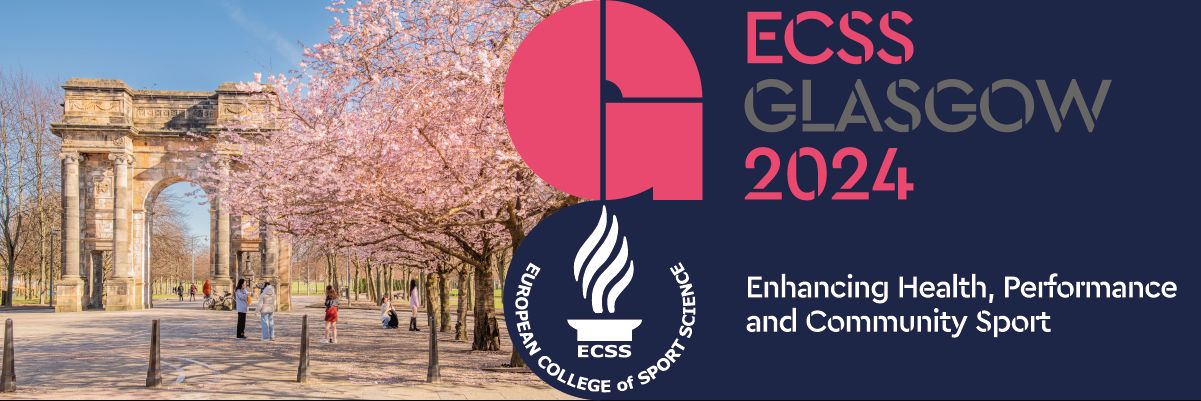Scientific Programme
Sports and Exercise Medicine and Health
IS-MH12 - Eccentric Exercise: Debunking Myths, Enhancing Rehabilitation, and Tailoring for Excellence
Date: 03.07.2024, Time: 14:45 - 16:00, Lecture room: Clyde Auditorium
Description
Muscle weakness after traumatic joint injury is complex, often resulting from a mix of neurological and morphological factors that disrupt muscle regulation. To this point, 4 out of 5 individuals undergoing anterior cruciate ligament (ACL) rehabilitation, one of the most common musculoskeletal recovery programs, exit the process with strength levels well below clinical standards. To address this, we must look beyond conventional exercise prescriptions. Eccentric exercise offers a powerful solution, uniquely stimulating the nervous system and signaling pathways supporting tissue health. Research, including our own, highlights the effectiveness of eccentric exercise in addressing the root of weakness by maintaining muscle communication through less affected neural pathways and engaging stretch-sensing properties promoting growth. Despite the potential benefits, reluctance to adopt eccentric exercise is rooted in injury concerns based on misconceptions from lab models that differ from clinical scenarios. However, clinically relevant experiments show the safety and effectiveness of eccentric exercise. Our goal is to encourage reflection on current practices. Dr. Lepley will address clinical reluctance to eccentric exercise due to its misleading injury association. Dr. Andrushko will discuss accelerating rehabilitation through early-phase eccentric cross-education training. Dr. Lorenz will provide tools for tailoring eccentric exercise interventions to elite athletes' needs.
Chair(s)

Kazunori Nosaka
Edith Cowan University, School of Medical and Health Sciences
Australia

Sidney Grospretre
C3S - EA4660, Sport Faculty
France

Speaker A
Lindsey Lepley
University of Michigan, School of Kinesiology
United States
Read CVECSS Glasgow 2024: IS-MH12
Re-evaluating classic beliefs about eccentric exercise
The complexity of muscle atrophy following traumatic joint injury necessitates a therapeutic approach that targets the factors involved in muscle health and growth. Joint injuries, like anterior cruciate ligament (ACL) rupture, lead to an immediate disruption in neural signaling required for muscle activation. This disruption negatively affects muscle volume and quality, primarily due to the reduced ability to generate necessary action potentials to maintain muscle health. Exercise modalities that therefore rely on the patients neural drive to control contractions have proven ineffective after joint injury because achieving full and sustained muscle contractions is challenging. Lengthening contractions, also known as eccentric muscle actions, present an appealing alternative to shortening contractions as they have the capability to uniquely trigger the nervous system and signaling pathways that support tissue health and growth. Promising results have emerged from the use of eccentrically biased exercise prescriptions to enhance muscle recovery after injuries like ACL rupture. Various techniques, such as electromyography, neuroimaging, immunoblotting, and immunostaining, have shed light on the beneficial adaptations associated with eccentric exercise. Despite its growing acceptance as an exercise prescription, there is still reluctance within the clinical community due to longstanding associations of eccentric muscle actions with muscle injury. This dogma is due, in large part, to misinterpreted benchtop models that often involve extreme conditions that do not accurately represent the clinical scenario (i.e., the removal of the distal point of long-tendon from the bone for experimental purposes or animals that are exercised with the intent to cause injury). Through this lecture, Dr. Lepley aims to provide basic supporting evidence from the single fiber to the whole tissue level supporting the hypothesis that the inclusion of lengthening exercises in musculoskeletal rehabilitation can be a safe and effective exercise prescription for promoting muscle recovery. She will discuss how these adaptations are primarily driven by improvements in neural drive and responsive cellular signaling resulting from stretching and repetitive lengthening of activated muscles. ACL injury will be used as a model, and attendees will be encouraged to consider the responsible use of isolated lengthening exercises to address the various factors after joint injuries that contribute to the degradation of muscle tissue health and volume. Dr. Lepley will also direct therapists to a series of original clinical articles that provide protocols that can serve as guidelines for development.

Speaker B
Justin Andrushko
Northumbria University, Department of Sport, Exercise and Rehabilitation
United Kingdom
Read CVECSS Glasgow 2024: IS-MH12
Accelerating recovery post-ACLR with early-stage eccentric cross-education
Present anterior cruciate ligament reconstruction (ACLR) rehabilitation protocols typically postpone dynamic open-chain strength training exercises until 3 to 4 weeks post-surgery. Although this delay minimizes post-operative complications by allowing the graft to heal, it also dampens the recovery rate, leading to decreased quadriceps muscle strength, size, and altered neuromuscular function in both limbs. These changes, when left unaddressed, enhance the risk of developing osteoarthritis. Since quadriceps strength is protective against the development of osteoarthritis, strength training to enhance knee extensors muscle strength is a critical aspect of the rehabilitation process. In this context, the first 3 to 4 weeks post-ACLR, with current standard rehabilitation protocols, represent a pivotal yet underutilized period. This window of missed opportunity offers room for enhanced recovery strategies. Cross-education is a concept where training one side of the body benefits the opposite, untrained side. These protocols can potentially counterbalance the muscle size and strength declines stemming from disuse during this period of recovery. However, the mode of exercise matters, as work has consistently shown that eccentric cross-education promotes nearly 2 times greater strength gains and more robust neural recovery than concentric or isometric cross-education protocols. Despite its potential, eccentric cross-education hasnt been widely adopted in clinical settings due to an incomplete understanding of the mechanisms behind it. Some clinicians also fear it may exaggerate limb strength and size asymmetries; measures often monitored during ACLR rehabilitation. Despite these reservations, neglecting strength preservation in the early post-surgery phase may be shortsighted given the risks associated with weak knee extensors. This lecture emphasizes the critical role of muscular strength for preventing future knee injuries and the development of osteoarthritis. We will review the literature investigating the use of cross-education to offset disuse related declines in muscular strength and size, and introduce the potential mechanisms of cross-education in the context of developing an optimized adjunct eccentric cross-education protocol. This approach is designed to enhance and complement standard rehabilitation practices to preserve muscle strength, and accelerate recovery of the reconstructed limb during the early-stages post-ACLR.

Speaker C
Daniel Lorenz
Lawrence Memorial Hospital / OrthoKansas, Sports Medicine
United States
Read CVECSS Glasgow 2024: IS-MH12
Practical interventions utilizing eccentric exercise for elite athletes: Mid to late stage rehabilitation after ACL reconstruction
Successful athletic performance in field and court sport athletes is largely predicated on the ability to decelerate and accelerate at high rates of speed. Thus, appropriate training in both rehabilitation and strength and conditioning settings maximizes an athlete’s ability to put maximal force into the ground while also minimizing ground contact time. Since a substantial number of field and court sport athletes regularly involve themselves in high-velocity acceleration and deceleration, their aptitude for slowing down and altering their direction is intricately tied to their proficiency in managing eccentric movements before transitioning into concentric acceleration. In instances where individuals exhibit inadequate knee shock absorption and an elevated level of knee stiffness upon landing, particularly as seen in those with compromised quadriceps function, such as in the case of anterior cruciate ligament reconstruction (ACLR), it becomes imperative for clinicians to prioritize the inclusion of eccentric exercises as a pivotal component of the rehabilitation plan. The force-velocity curve illustrates the dynamic relationship between muscle force and contraction velocity. On the concentric side of this curve, we observe that the highest forces are generated when the velocity is zero, and as velocity increases, force diminishes. In contrast, when we shift our focus to the eccentric side of the force-velocity curve, where the muscle lengthens while still producing force, a remarkable characteristic emerges: the muscle can maintain relatively high-tension levels even at higher velocities. This unique attribute means that with eccentric muscle actions, the muscle exhibits the ability to generate both high force and high velocity actions. Consequently, through appropriate training strategies, athletes can aim to achieve this dual objective. The focus of this lecture is to provide attendees with practical interventions clinically throughout the rehabilitation timeline that focus on the physical qualities of athletic performance. Interventions will focus on using eccentric exercise to produce maximum force and gradually progress to high force, high velocity decelerations to match the demands for returning to sport. A secondary objective is to provide specific program design recommendations in regard to loading parameters as well as sets and repetitions performed to achieve the training objectives.
